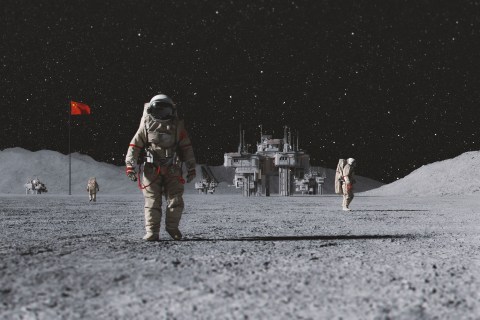Within a few years, China might try to annex portions of the Moon, according to a warning from NASA.
Administrator of the space agency Bill Nelson expressed his concern that government-sponsored civilian programs could be covert military operations.
In his testimony before the House Appropriations Committee, Mr. Nelson said that China has made amazing progress, particularly in the past ten years, but they are extremely secretive.
This was in support of NASA’s demand for a $25.4 billion budget for 2025. We think that a significant portion of their purportedly civilian space program is actually military in nature. I believe that we are essentially engaged in a race.
During the original ‘space race’, the US and Russia battled to be the first country to put humans on the Moon. The US won when Neil Armstrong stepped onto the surface in 1969.
However, while it remains the only country so far to have landed astronauts on the Moon, China has pledged to achieve the feat by 2030, with plans for a permanent base.
Nasa’s Artemis programme is aiming to return US astronauts to the lunar surface potentially as soon as 2026, but has hit a number of delays.
The mission will focus on the lunar south pole, an area of interest to a number of countries due to the possibility of water ice, which could be used to establish long-term bases and to produce fuel and oxygen for missions further out into space.
Both the US and India have successfully landed unmanned spacecraft around the pole. China has also landed on the Moon, including when deploying a lunar rover as part of its Chang’e 3 mission, and returning samples from the surface as part of Chang’e 5 in 2020.
‘Their latest date that they have said that they’re going to land is 2030, but that keeps moving up,’ said Mr Nelson.
Who owns the Moon?
The Outer Space Treaty states that the exploration and use of space shall be carried out in the interests of all countries – that includes the Moon.
That means no one nation can ‘own’ the Moon, or any part of it, regardless of where they plant flags or build bases.
However, not everyone has signed the Treaty – while China is a signatory, Russia is not.
And as the countries and companies begin to explore mining the Moon, deciding who can dig where and could become a source of international tension in years to come.
‘My concern would be if China got there first and suddenly said “okay, this is our territory you stay out”.
‘Obviously you don’t want to interfere with each other, but don’t go in and declare that this whole territory is suddenly yours.’
Mr Nelson used the Spratly islands as an example on Earth, an area in the South China Sea simultaneously claimed by China, Taiwan, Vietnam, Malaysia and the Philippines on account of its rich natural resources.
‘I think it’s incumbent on us to get there first and utilise our research for peaceful purposes,’ he said.
A paper published last month revealed China is planning to deploy its advanced all-seeing surveillance system on the future lunar base, and will give it the ability to ‘detect and aim at suspicious targets’.
The Skynet video surveillance network is already widely used in the country, and includes more than 600 million cameras – which averages one camera for every two adult Chinese citizens and leaves little of the country beyond the reach of a lens.
China has also launched its own space station, the Tiangong space station, which is permanently crewed like the ISS.
However, Nasa has also revealed it plans to begin examining how to extract resources from the Moon, with excavations potentially starting in 2032.





